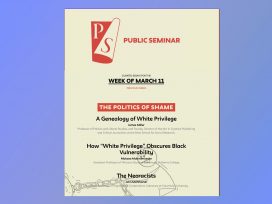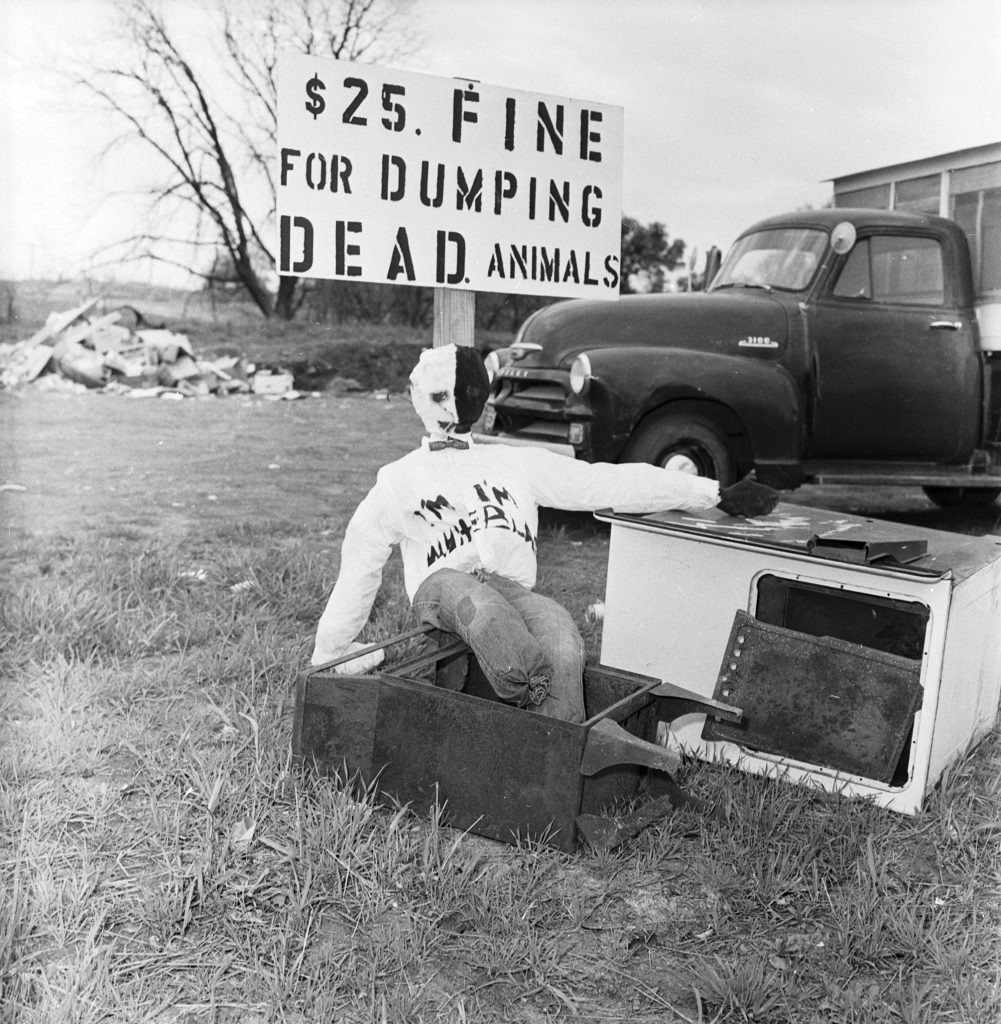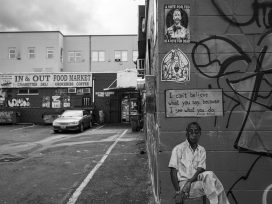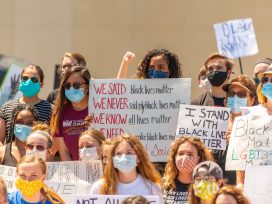In the early morning of 25 April 1959, about ten masked men wearing white gloves entered the Pearl River County Jail in Poplarville, Mississippi. One of the guards let them in and led them to the cell where 23-year-old Black truck driver Mack Charles Parker, accused of raping a white woman, was being held.¹ According to the testimonies of other inmates, three days before the trial was due to begin, the mob beat Parker with their fists and half-metre-long sticks, slightly thicker than broom handles, and threw a trash can on him. They dragged Parker, who was covered in blood, through the prison corridors to the exit, loaded him into a Chevrolet and drove him to the Bogalusa bridge in Louisiana, about 32 kilometres away from the jail. After the group that targeted him for lynching, including a former deputy sheriff, shot him, his body was chained and sunk in the Pearl River. It was found about ten days later.
In November of that same year, in a run-down upstairs room of a wooden tavern in Poplarville, Texas journalist John Howard Griffin began writing the first lines of a letter to his wife after hearing the news of Parker’s murder, but was unable to continue, his imagination taking over:
Hattiesburg, November 14, My darling, followed by a blank page. The visual barrier imposed itself. The observing self saw the Negro, surrounded by the sounds and smells of the ghetto, write ‘Darling’ to a white woman. The chains of my blackness would not allow me to go on. Though I understood and could analyze what was happening, I couldn’t break though: Never look at a white woman – look down or the other way. What do you mean, calling a white woman ‘darling’ like that, boy? … I felt disaster. Somewhere in the night’s future the tensions would explode into violence. The white boys would race through too fast. They would see a man or a boy or a woman alone somewhere along the street and the lust to beat or kill would flood into them. Some frightful thing had to climax this accelerating madness.
John Howard Griffin spent six weeks in 1959 and 1960 travelling through New Orleans and Mississippi to document racism in the ‘Jim Crow South’ known for its segregation laws. However, when he published his experiences of what he endured on buses, in restaurants and on the streets in newspaper articles and his book Black Like Me, John Howard Griffin’s skin was no longer Black. In publicity photos he reappeared as a white man with slicked-back brown hair and a wrinkled forehead, who could return to his white wife, his white children and a white everyday life. Believing that he could prove that violence clings to the skin of Black bodies only through a first-person perspective, Griffin had consulted a dermatologist with the support of his editorial team to darken his skin colour before setting out for Black neighbourhoods.
By literally disguising himself as a Black person for the sake of a social experiment – it is quite painful to watch James Whitmore in the 1964 film adaptation, with almost cartoonishly black paint rubbed onto his face, depicting a road to hell paved with good intentions, not too dissimilar from minstrel shows – Griffin inadvertently turned Blackness into a cloak that could be worn and removed at will. But it soon became clear that getting definitively out of that skin was a bit more difficult.
One morning, he was awoken by a call from a reporter from the local newspaper from Fort Worth, Texas, not far from Dallas where he had grown up:
He told me that the Star-Telegram had received an anonymous call that racists had hanged my effigy on Main Street. The newspaper checked it out with the local constable who confirmed that a dummy, half black, half white, with my name on it and a yellow streak painted down its back, was hanging from the wire.
Around five in the morning, a local shopkeeper had already spotted the dummy and requested that it be removed, to which the police officer he approached threw it on the rubbish dump. Griffin notes in his conversation with the reporter that when the journalist and photographer arrived at the site, it was once again bound up, this time bearing the sign: ‘$25 fine for dumping dead animals’.
That noose on a wire, death threats and other threats of violence, which instilled horror and fear in Griffin and his family, transmitted the terror faced by Southern Black communities into the homes of many white households in the area, who until then had only brushed up against the reality of what was happening to their neighbours a few streets away. Despite numerous newspaper articles detailing racist violence, the experiences of those directly affected by it, and the growing resistance of Black and anti-racist organizations in the 1950s and 1960s, it wasn’t until violence spilled over onto the skin of a white narrator, suggesting that the same fate could befall them too should they dare to cross racialized boundaries in any way, that unease seeped into otherwise lulled and mentally distant suburbs. Racism, which they had convinced themselves did not concern them, began to affect them too.
The testimony of the white narrator about bus drivers who out of spite refused to let Black passengers off or polished white men with pipes who chased racialized people out of nearby parks, followed then by lynching threats, was granted a legitimacy that had been denied to criminalized lives in impoverished Southern regions. An integral part of such criminalization was and still is the suspicion placed on bodies declared undesirable or dangerous, of their words, movements and actions, where there must be some hidden motive, some reason why something happened to them, or a trace of guilt for the violence they are subjected to. Inhabiting the skin of the other (both metaphorically and literally) – at the core of Griffin’s experiment – aimed to legitimize those suspect lives and bear witness to them up close.
Frankenstein marginalization
A surrogate form of Griffin’s blackface, of slipping into a marked skin, can be glimpsed today in the activist obsession with narrated personal experiences. The pressure on marginalized existences to constantly recount their trauma and pain, so that fingers may be inserted into those wounds – as in Caravaggio’s staging of the apostle probing Christ’s wounds – builds the identity of individuals with good Christian, liberal morals, deemed altruistic and identity-conscious. The stories of the marginalized are meant to purify the listener of the sins of colonialism, racism, or gender-based violence. The listener then engages in issues of injustice within the relative safety of a Saturday workshop at an association. There is even less courage in these processes than in Griffin’s case.
In Freud’s psychopathological theatre, enduring violence, being willing to accept the possibility of injury, wriggling through and breaking out of it are delegated to marginalized actors who will live through those conflicts on behalf of the audience. The audience, reclined in an armchair, is left to observe what will happen without having to expose themselves or suffer on stage in any way.
On the website of the Danish organization Foreningen Stop Volden, which in 2000 initiated the concept of the human library, there is a form to add oneself to the catalogue: ‘What relevant experiences with stigma/prejudice can you share with readers?’, ‘What title would you assign to yourself?’, ‘Can you provide examples of situations in which you experienced stigma or prejudice due to your title?’ ‘Autism’, ‘Bisexuality’, ‘Depression’ are listed instead: ‘human genres’ containing ‘human books’ – the marginalized-actor equivalent of Bradbury’s Fahrenheit 451 listed under ‘Foreign Agents’, Thoreau’s Walden under ‘Civil Disobedience’ or the collected works of Bertrand Russell under ‘Imprisoned Pacifists’.
The reader borrows and returns a ‘book’, choosing those they want and those they feel comfortable enough to listen to at a given moment. Human books, just like Griffin’s darkened skin, become something that can be set aside, allowing the reader to return to their everyday life. Ableist and gender-based violence begin and end with the compassion of listening, so it is only necessary to allow readers to taste the blood and chip their teeth on hard covers. The needs of the reader guide and direct the Human Library, which is supposed to capture some imagined generic narrative of an entire group of people. It does not matter who is pulled from the shelf in sections titled ‘Roma Women’ or ‘Single Parents’. All those bound objects, those ‘personal experiences’, collected and categorized under headings, it is suggested, come down to a similar conclusion.
‘Autism’, ‘Bisexuality’, ‘Depression’ must gather a few strands of someone’s life in an hour or so, returning ableist and gender-based violence to a compulsive testimony of something that is assumed to be politically untouched and contained within the bodies that tell the story. ‘Autism’, ‘Bisexuality’, ‘Depression’ are Frankenstein-like constructs cobbled together in the meanings through which these categories have arrived, with their histories and significations, through which personal stories must be threaded. They are patchworks of contradictions and tensions between possible interpretations of daily life that we are forced to navigate in order to achieve even a minimal degree of intelligibility on the discourse of rights, medicine, science or political work on the left; with ‘personal experience’ both offered and accepted for granted.
The least disruptive voice
This way of structuring the understanding of marginalized experiences reduces the problem of racism or gender to representation, to the flatness of identity, instead of treating experience as a lever for recognizing the branching complexity and layered nature of violence, leaving fragments in various bodies, fragments that only through careful collection might reveal where they originate. The suffering and tragic stories constantly expected from marginalized bodies fuel Griffin-like altruism and deflect from the demand for actual reflection on the implications of queerness or anti-racism for how political organizing is done in spaces that pride themselves on being progressive.
The reproduction of violence against racialized and queer bodies is not only the domain of some ‘evil right-wing’ but also leftist spaces that regularly employ various disciplinary mechanisms to control marginalized lives. The confinement to personal experience is just one such mechanism in the arsenal of practices that Sara Ahmed, in Living a Feminist Life from 2017, following psychoanalyst Alice Miller, calls ‘poisonous pedagogy’. In Miller’s work, poisonous pedagogy refers to the enforcement of certain behaviours in children through violent imposition, where beatings may be replaced by (and increasingly need to be so that unrest does not escalate into rebellion) more insidious forms of control, supposedly ‘for their own good’. The excessive will that bursts from racialized and queer bodies is forcibly subdued, demanding that political work be reorganized to branch in different directions. Discipline and obedience are achieved through constant reminders and by nudging into the abyss of trauma, into an emotionality that is kept away from the possibility of politicizing and transforming imposed conditions.
In Black for a Day: White Fantasies of Race and Empathy, Alisha Gaines describes the vertical nature of empathy stemming from liberal morality through a fragment of memory from growing up in the segregated American South, found in a book by historian Melton A. McLaurin:
One was never to behave badly toward blacks… [this] had little to do with the admission that blacks were fellow humans. Rather, it was because superior people never treated their inferiors in an unseemly manner. For example, one didn’t say ‘nigger,’ not because the use of that word caused blacks pain but because to do so indicated ‘poor breeding.’ ‘We don’t use that word in our family’—this was the standard response.
The ‘good white’ or ‘good cisgender/heterosexual narrator’ requires constant validation of their altruism towards the underprivileged and marginalized around them, a reaffirmation of their efforts and beliefs, with minimal disruption to their own comfort by potential demands for critical scrutiny of the iceberg of racism and gender-based violence within capitalism. Politeness and compassion, disguised as solidarity, emerge in the filling of diversity quotas at the table, the curation of living books, the inclusion of a queer person in a feminist workshop, or a token foreign worker from India or the Philippines at a labour union meeting.
The expectation of a story is the expectation of a specific ‘type’ and ‘form’ of story. The genre of personal experience narrative has its own conventions and rules that must be followed. What is demanded of marginalized bodies is not even necessarily what happened to them and what they did as a result but rather their consent to a ritual, moving through predetermined themes and motifs in order to keep the existing structures of knowledge intact. Narration is assigned to the least disruptive voice, the one most easily used to support the politics and aspirations of entrenched epistemic orders. What I mean is, the problem does not lie in a scarcity of narration but in the dictates and constraint of how it may unfold, under what conditions and to what purpose it may be subjected.
Performative care and the comfort of compassion restrain attempts at political work. To show solidarity means to carry part of the burden, to plunge one’s hands into the mud with the risk of cuts and insect bites. The effigy of John Howard Griffin hanging from a wire in Fort Worth is a threat stemming from aligning oneself with those who are lynched or face the threat of lynching. Why should Griffin’s journey through the South be considered exceptional or especially brave, when it merely mirrored the daily reality of countless racialized persons? A critical examination of Griffin’s solidarity means tracing its dark and painful corners; it does not involve a pat on the back decades later but rather a listing of implications and consequences so that something may be learned from the concrete work that’s been done.
This article was first published by Vox Feminae. Its translation from Croatian into English was commissioned as part of Come Together, a project leveraging existing wisdom from community media organization in six different countries to foster innovative approaches.









